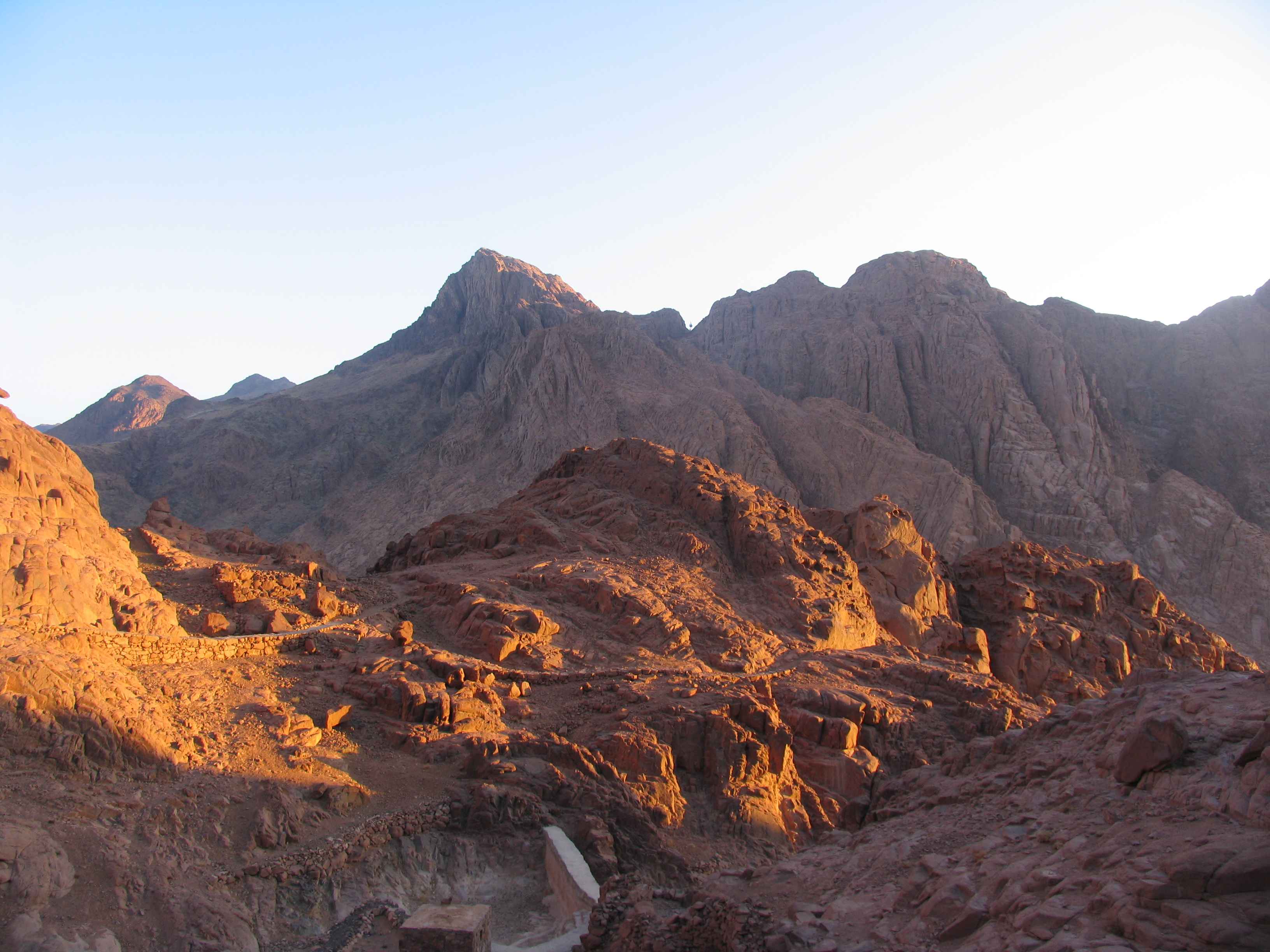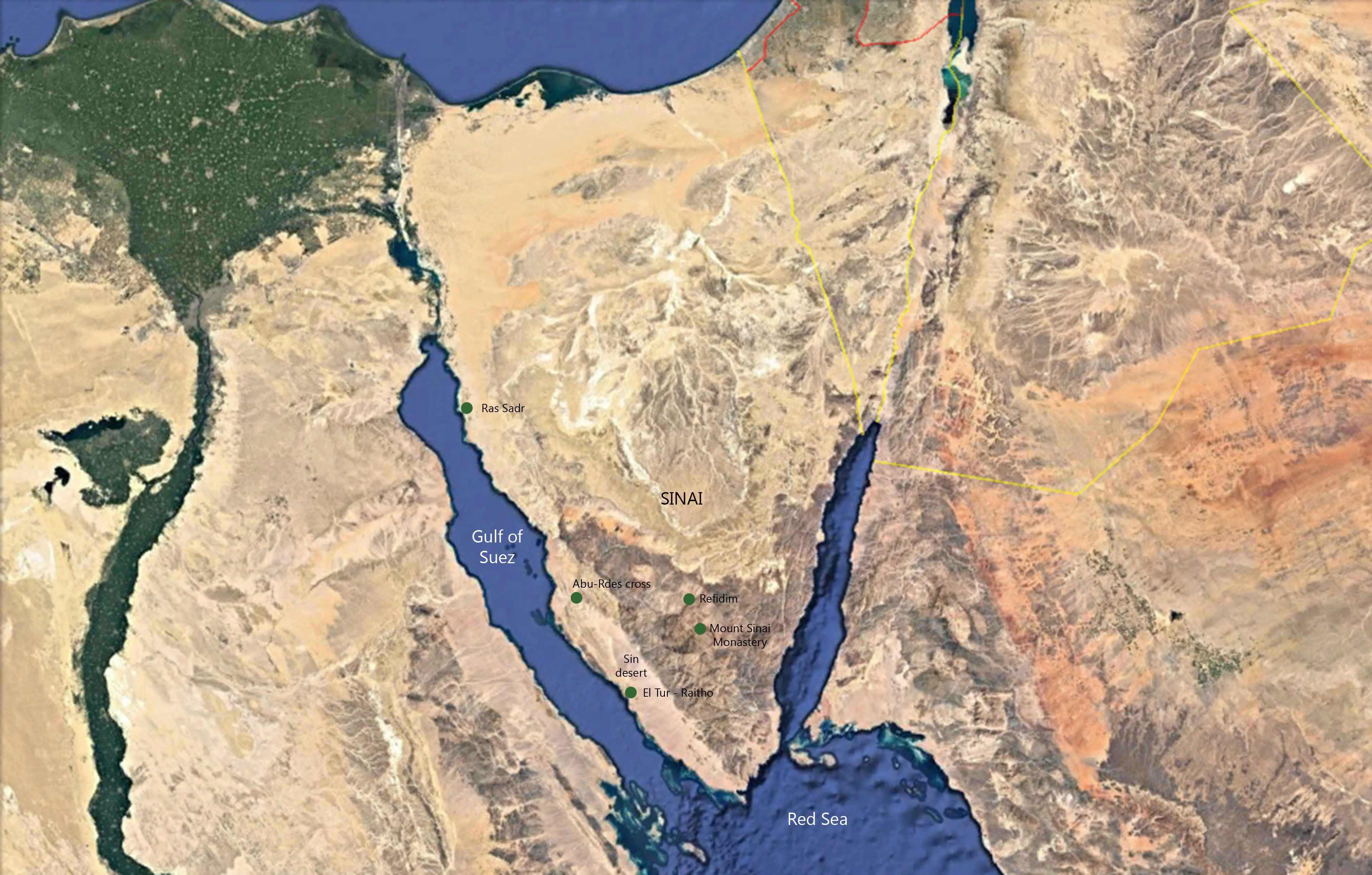OLD TESTAMENT

Moses in the Land of Midian
At the age of forty, Moses fled into the wilderness to escape the wrath of Pharaoh, and came to the land of Midian. Here he met Jethro, the priest of the Most High God, and married his daughter Zipporah. They had two sons. Moses called his firstborn son Gershom, saying, “I have been a stranger in a strange land” (Exodus 2:22), and his second son he named Eliezer, which means “God is my help,” saying, “the God of my father was mine help, and delivered me from the sword of Pharaoh” (Exodus 18:4). It was here that God appeared to him in the Burning Bush, and here that he received the Ten Commandments and the whole of the Law. North of the catholicon there is preserved to this day the well at which Moses met the seven daughters of Jethro, as it is recorded in the scriptures (Exodus 2:15-22).
The Route of the Exodus
About the thirteenth century BC, the Children of Israel crossed the Sinai in their trek towards the Promised Land. Although the exact route that they followed has been much discussed among scholars, the traditional route extends through the Red Sea and then south to Ras Sudr (or Sadr), where Moses turned the bitter waters into sweet. Subsequently, they came to Elim, located at Raitho, the site of the seventy palm trees and twelve springs of water. From there, following the valley of Wadi Hebran, they passed to Refidim, where they defeated the Amalekites, and from thence to Horeb, the Mount of the Law.

The Prophet Aaron
From the time when God commanded him to return to Egypt and free the Children of Israel, Moses had his brother Aaron as his helper and support. Aaron was anointed to be the first High Priest, when it was his rod that miraculously “budded, and brought forth buds, and bloomed blossoms, and yielded almonds” (Numbers 17:8). Today there is a chapel dedicated to the Prophet Aaron at the entrance to the valley where the Holy Monastery of Sinai is located.




